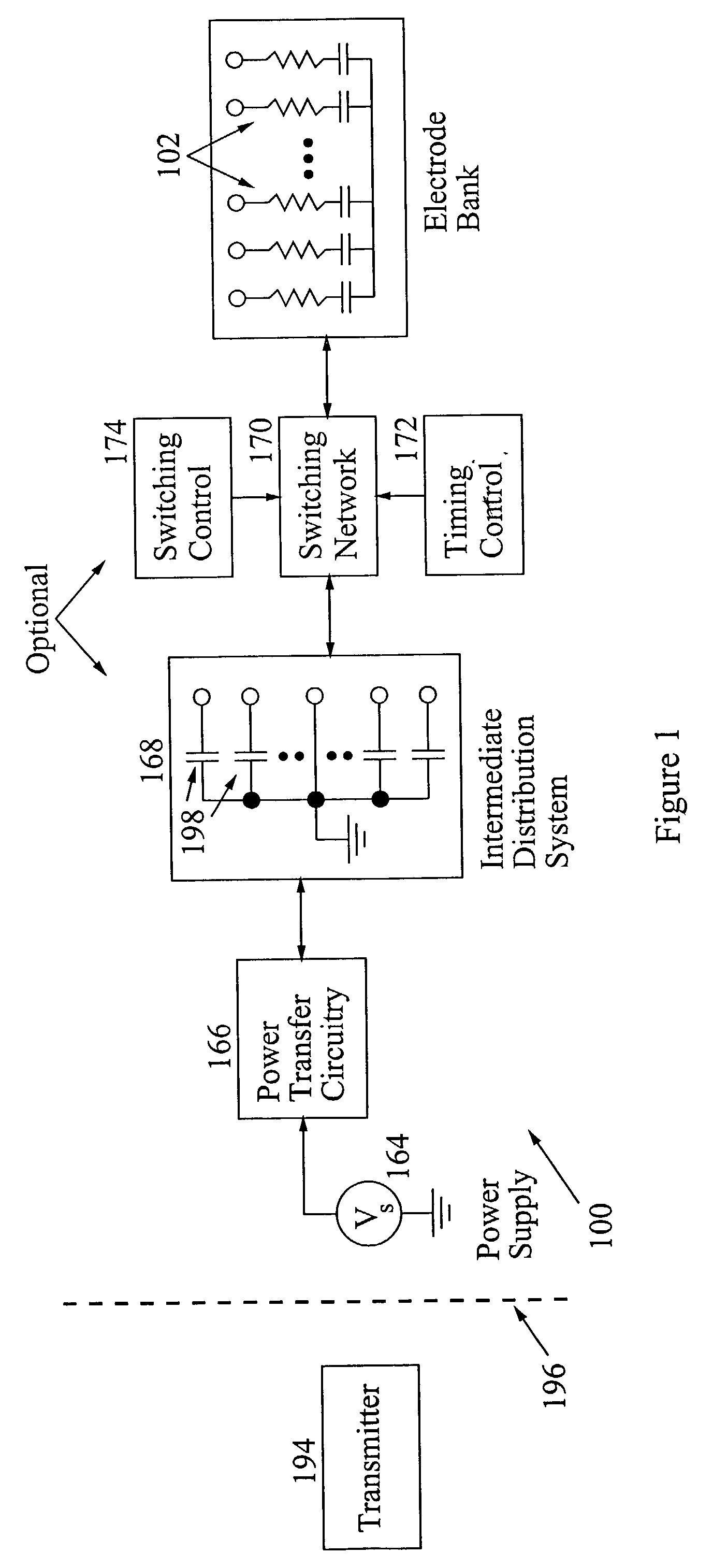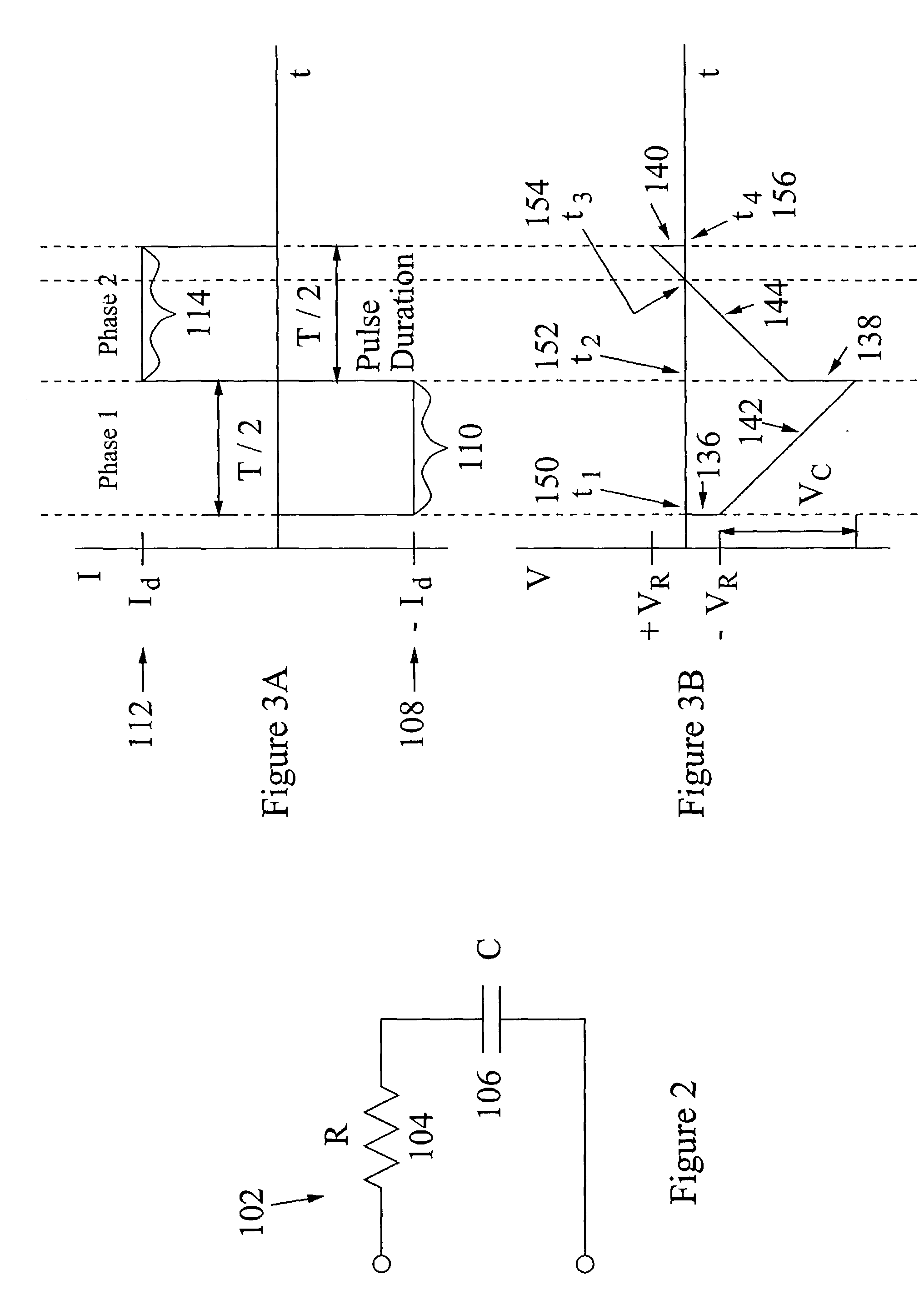System for and method of power efficient electrical tissue stimulation
a technology of electrical tissue and power-efficient operation, which is applied in the field of medical devices capable of producing tissue or nerve stimulating pulses, can solve the problems of inefficiency of typical circuit techniques in driving this type of electrodes, and none of the electrodes and other components are recovered after stimulation, so as to reduce the power required for effective stimulation and power-efficient operation
- Summary
- Abstract
- Description
- Claims
- Application Information
AI Technical Summary
Benefits of technology
Problems solved by technology
Method used
Image
Examples
first embodiment
Power Efficient Electrode Supply: First Embodiment
[0074]In reality, a voltage supply that follows the step-ramp pattern in FIG. 6A or 6B is very difficult to build. But an approximation to those patterns can be made by switching between a number of different voltage supplies 176A-C, as shown schematically in FIG. 7. A typical implementation for a power efficient voltage supply 175, as shown, might use three voltage sources 176A-C for each phase 110, 114. The total number of voltage sources in that case could be held to four if the middle voltage source 176B were used in both phases. This is shown in the waveforms of FIGS. 8A and 8B, with three negative voltages and one positive voltage. The use of a greater number of voltage levels will yield a closer approximation to the minimum required power, but at a cost of increased system complexity. The dashed lines represent the optimal electrode voltage 178 and optimal current 180 waveforms for minimal power dissipation. One of the solid l...
second embodiment
Power Efficient Electrode Supply: Second Embodiment
[0075]Another embodiment of a power efficient electrode supply 175 is illustrated in FIG. 9. In this configuration, a ramping voltage 163 may be made available to charge electrode 102 (or multiple electrodes not shown) by driving a constant current from a power supply 164 into a storage capacitor 165 by means of power transfer circuitry 166. Capacitor 165 comprises a portion of an intermediate distribution system (IDS) 168, which is represented in FIG. 1 as a bank of storage capacitors. Storage capacitor 165 will be the only capacitor connected to the electrode being stimulated during a single constant-current phase. Switch network 170 establishes and interrupts connections between the ramping capacitor 165 and the electrodes 102 to be stimulated. Capacitor 165 can be charged to give a pseudo-ramping voltage by power transfer circuitry 166. There will be some ripple in the ramp, but it can be kept small.
[0076]Power transfer circuitr...
PUM
 Login to View More
Login to View More Abstract
Description
Claims
Application Information
 Login to View More
Login to View More - R&D
- Intellectual Property
- Life Sciences
- Materials
- Tech Scout
- Unparalleled Data Quality
- Higher Quality Content
- 60% Fewer Hallucinations
Browse by: Latest US Patents, China's latest patents, Technical Efficacy Thesaurus, Application Domain, Technology Topic, Popular Technical Reports.
© 2025 PatSnap. All rights reserved.Legal|Privacy policy|Modern Slavery Act Transparency Statement|Sitemap|About US| Contact US: help@patsnap.com



